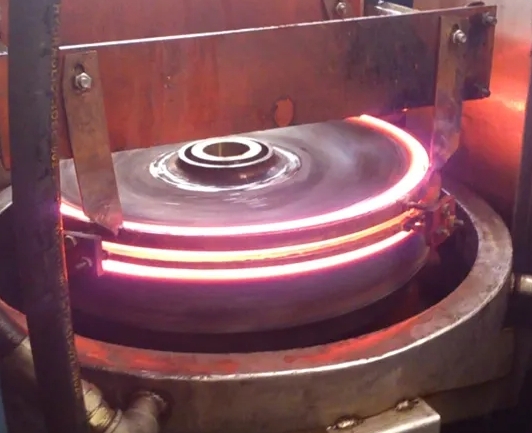- 21
- Jul
สรุปวิธีการดับทั่วไปสิบวิธีของเครื่องดับความถี่สูง (1)
สรุปวิธีการดับทั่วไปสิบวิธีของ เครื่องดับความถี่สูง (1)
1. Single medium (water, oil, air) quenching
Single medium (water, oil, air) quenching: Quenching the workpiece that has been heated to the quenching temperature into a quenching medium to cool it completely. This is a simpler quenching method and is often used for carbon and alloy steel workpieces with simple shapes. The quenching medium is selected according to the heat transfer coefficient, hardenability, size and shape of the parts.
2. การดับเบิ้ลปานกลาง
Dual-medium quenching: The workpiece heated to the quenching temperature is first cooled to the Ms point in the quenching medium of a high-frequency heating machine with strong cooling capacity, and then transferred to the slow-cooling quenching medium to cool to room temperature to achieve different quenching cooling temperatures range, and has an ideal quenching cooling rate. It is used for complex shapes or large workpieces made of high carbon steel and alloy steel, and carbon tool steel is also mostly used in this method. Commonly used cooling media are water-oil, water-nitrate, water-air, oil-air. Generally, water is used as a quick-cooling quenching medium, oil or air is used as a slow-cooling quenching medium, and air is less used.
3. Martensite graded quenching
Martensitic graded quenching: เหล็กเป็น austenitized แล้วนำไปแช่ในของเหลว (อ่างเกลือหรืออ่างอัลคาไล) ที่มีอุณหภูมิสูงกว่าหรือต่ำกว่าจุด Martens บนของเหล็กเล็กน้อย เก็บไว้เป็นเวลาที่เหมาะสม และด้านในและด้านนอก ชิ้นส่วนของเหล็กได้รับการปฏิบัติ หลังจากที่ชั้นถึงอุณหภูมิปานกลาง มันถูกนำออกมาเพื่อระบายความร้อนด้วยอากาศ และออสเทนไนต์ที่ระบายความร้อนด้วยซุปเปอร์คูลจะค่อยๆ เปลี่ยนเป็นกระบวนการดับของมาร์เทนไซต์ โดยทั่วไปจะใช้สำหรับชิ้นงานขนาดเล็กที่มีรูปร่างซับซ้อนและข้อกำหนดการเปลี่ยนรูปแบบที่เข้มงวด และเครื่องมือและแม่พิมพ์เหล็กกล้าความเร็วสูงและเหล็กกล้าอัลลอยด์มักจะดับด้วยวิธีนี้
4. Martensite graded quenching method below Ms point
Martensitic graded quenching method below Ms point: When the bath temperature is lower than the Ms of the workpiece steel and higher than Mf, the workpiece cools faster in the bath, and the same result as the graded quenching can be obtained when the size is larger. Commonly used for larger size low hardenability steel workpieces.
5. Bainite isothermal quenching method
Bainite isothermal quenching method: The workpiece is quenched into a bath with the lower bainite temperature of the steel at an isothermal temperature, so that the lower bainite transformation occurs. Generally, it is kept in the bath for 30~60min. There are three main steps in the bainite isothermal quenching process: ① austenitizing treatment; ② cooling treatment after austenitizing;

